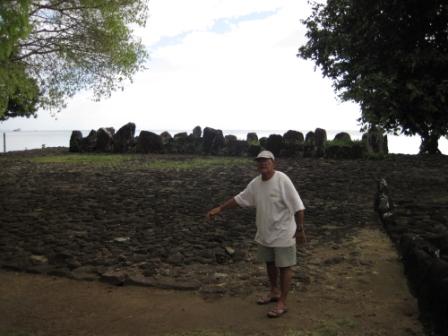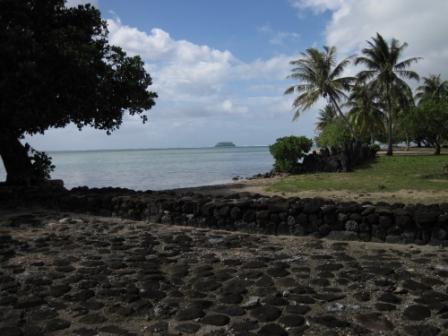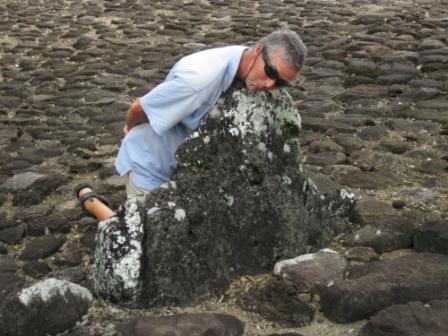Missionaries

VulcanSpirit
Richard & Alison Brunstrom
Tue 14 Aug 2012 21:17
|
One of the mysteries of Polynesia is the effect of
the missionaries - an effect felt more widely throughout the world, but
demonstrated more clearly and more completely here than anywhere else I
think).
The islands now comprising the Society Islands in
French Polynesia were 'discovered' in the 1760s. By then there was a
flourishing and organised society with a very strong culture; humans had been
present here for about 1000 years before the Europeans arrived. Both Hawai'i and
New Zealand were settled from here, and the Polynesians maintained a strong
religious identity across thousands of miles of ocean, despite almost constant
internecine warfare.
The very first missionaries, from the London
Missionary Society, arrived in 1797. By careful interference in local politics
they converted one of the local chiefs and then assisted him in subjugating
the other islands to create a unified kingdom. By 1819 he was so fully
converted that he issued a decree entirely banning the old religion and every
visible aspect of it including tattooing singing and dancing, and replacing it
with protestant Christianity. This decree was rigorously enforced, presumably
with the acceptance of the population. So successful was it that
the Polynesians lost much of their history (it was oral), their songs,
dances and musical instruments. Their bodies survived (now modestly clothed of
course), but their national identity was more or less obliterated because it did
not fit with the missionaries' eighteenth century European view of
appropriate conduct.
Here is a guide at the Royal Marae on Raiatea, the
centre of the old religion:
 The marae was a public meeting place whose
structure varied from place to place. Here, at the most important site in
the Pacific, the 'altar' in the background is compsed of two rows of coral
blocks on end. The guide claimed to be of the royal family, but somewhat diluted
by now - he was the youngest of 36 children to his father's six wives. Evidently
the missionaries did not entirely wipe out old traditions!
Here is another view of a marae:
 In the background is a small island or 'motu'. This
one was sacred, and even now many Polynesians will not set foot on it (including
our guide). It was where the excess babies were abandoned - food supplies were
very limited, and population pressure was extreme (hence theirb relentless
exploration of the Pacific), so when there were too many mouths to feed babies
were simply abandoned.
And here is our friend David Kidwell demonstrating
the sacrificial stone. This was in common use. The last pagan priest here
recounted in 1819 how he personally had officiated in 14 human sacrifices just
at this site. Since they had no metal tools beheading (which is not easy)
must have been quite messy.
 So it is easy to see why the missionaries must have
felt that they needed to bring these people to the one true God. It's amazing to
me that they were so successful, and in so short a time - only 20 years from
start to finish.
The new God found bodies offensive, so the natives
were made to cover themselves from head to foot. Early photographs show locals
in confected costumes which are risible nowadays - but seemingly they willingly
subjected themselves, such is the power of the Word. As telling perhaps is the
modern Tahitian phrase for 'hello' - "Io Orana". It's a corruption of the
English (the missionaries were all English) 'Your Honour', so the missionaries
clearly gave themselves a higher status.
The place is crawling with churches, all
Protestant, but being protestant all the usual sects have crept in as
well; Mormons, evangelicals, Seventh Day Adventists, Jehovah's Witnesses. I'm
not comfortable with any of this, but the locals were not massacred here, and
they don't do human sacrifice any more.
One really strange local custom is burying your
relatives in the front garden. Elaborate tombs are everywhere (there are no
public graveyards). This one is simple, and reoved from the house, but typical
in design. Some are huge, elaborate, and cover almost the whole garden,
rivalling the house for size and tastefully decorated with faded plastic
flowers. At least you are not going to forget granny, but what they are going to
do in another couple of generations when the garden is full I really don't know
- and of course the house can never be sold. Bizarre!
 |